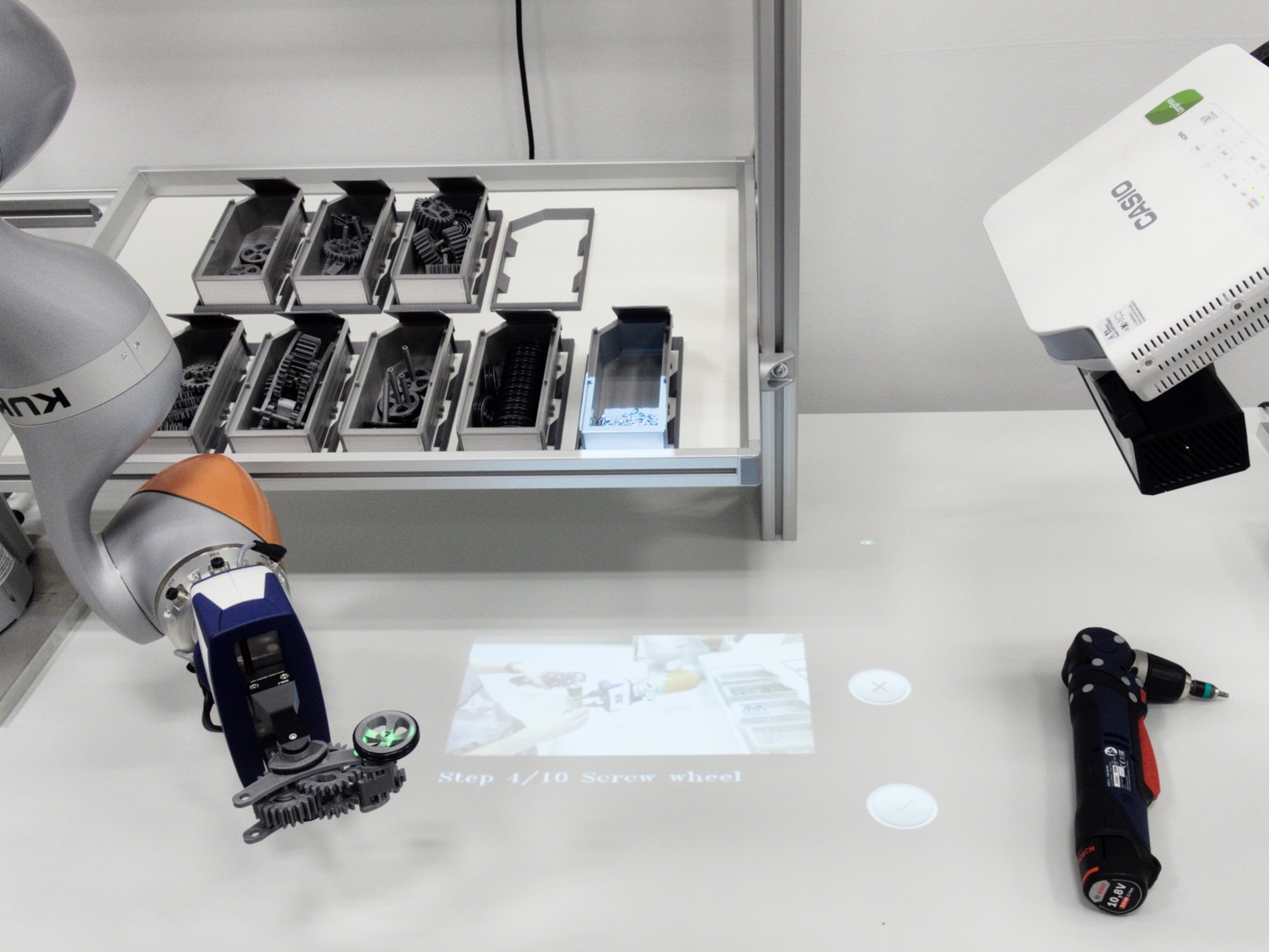By 2025 the World Economic Forum predicts „a blurring of physical and virtual spaces“ (see https://www.weforum.org/agenda/2020/06/17-predictions-for-our-world-in-2025/. Our expert Dr. Michael Voit explains, what this will mean for #manufacturing and human-machine-interaction on the #shopfloor.
- Interaction-technologies today used for human-robot-collaboration, e.g. identification, gesture interaction, etc. will be applied also for #machines and #manufacturing equipment. This will drive the ‚smartness‘ of machines and equipment on the shopfloor. You find some examples at https://www.iosb.fraunhofer.de/en/business-units/automation-digitalization/fields-of-application/industrial-human-machine-interaction/innovative–camera-based-assistencesystems.html.
- Augmented reality- (AR-) technologies will become more important also in manufacturing. Companies are already testing tablets, AR-glasses and other devices on the shopfloor. The use of both AR and audio is increasing. One example for the combination of different interaction technologies is our cobot-demonstrator, that we developed in cooperation with @PWC strategy& (see the following figure). Speach detection is yet another technology increasingly used on the shopfloor. It will soon become more robust and less weak against side noise. In another project we have shown the use and benefits of these technologies in healthcare, supporting physicians and their teams in the operating room (see https://www.iosb.fraunhofer.de/en/projects-and-products/konsens-op.html

- The technologies available such as people recognition, face detection, tracking, etc will become more robust, so they can be applied to use cases in manufacturing. Companies then benefit from faster logistics and material flow, the counting of staff in a U-shape assembly and the automatic calculation of OEE based on the number of assembly workers. When using AI, e.g. Deep Learning, it will make the systems more efficient and user friendly.
- The availability of #perception and tracking leads to new forms of assisting systems on the shopfloor. They ‚realize‘ automatically what is happening in manufacturing and #assembly and provide role-based information to the users. Instead of automation of single steps of operation future human-machine-interaction will combine the best of both worlds: human capabilities and machine reliability.
Downloads:
07.05.2021
